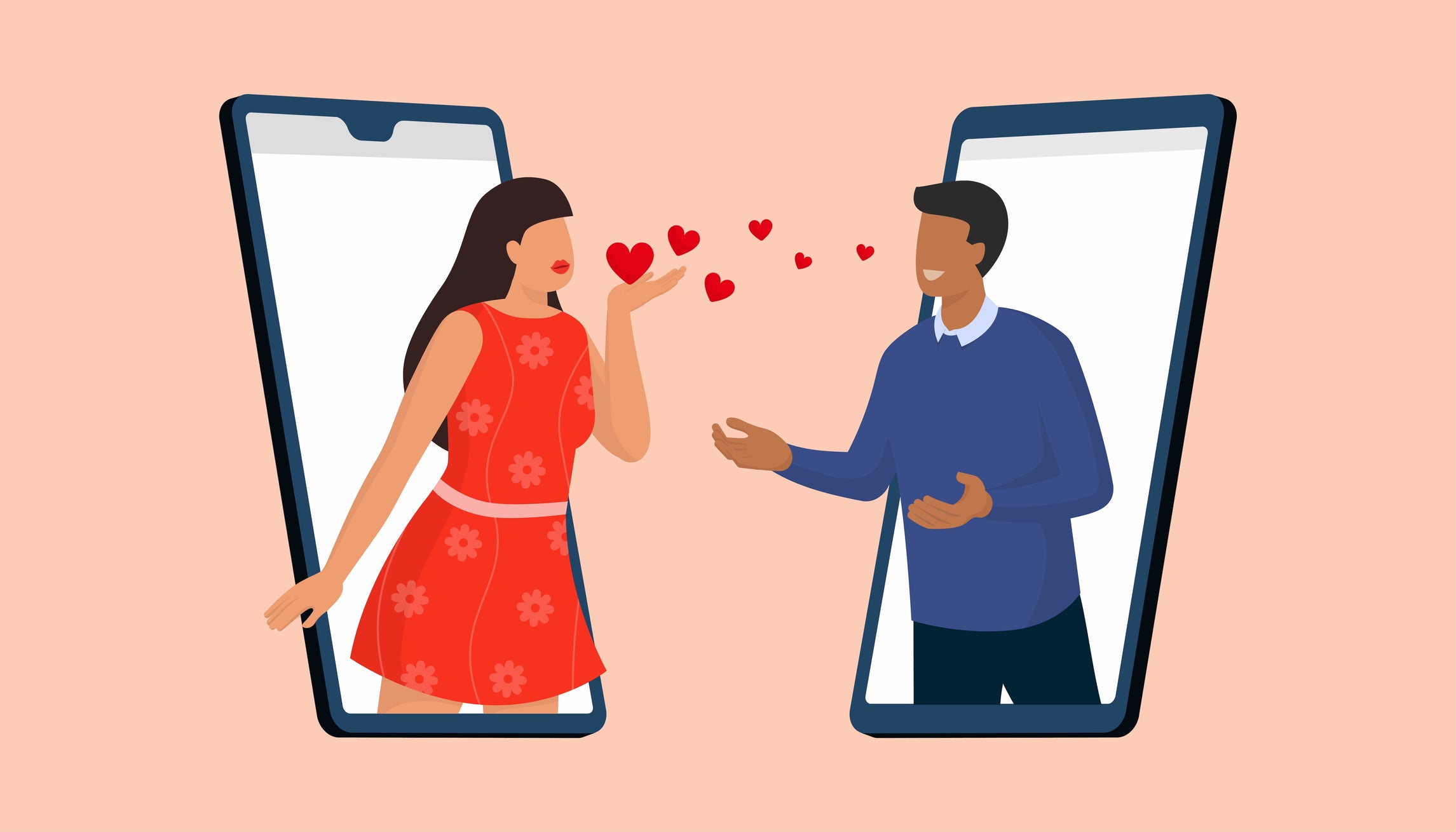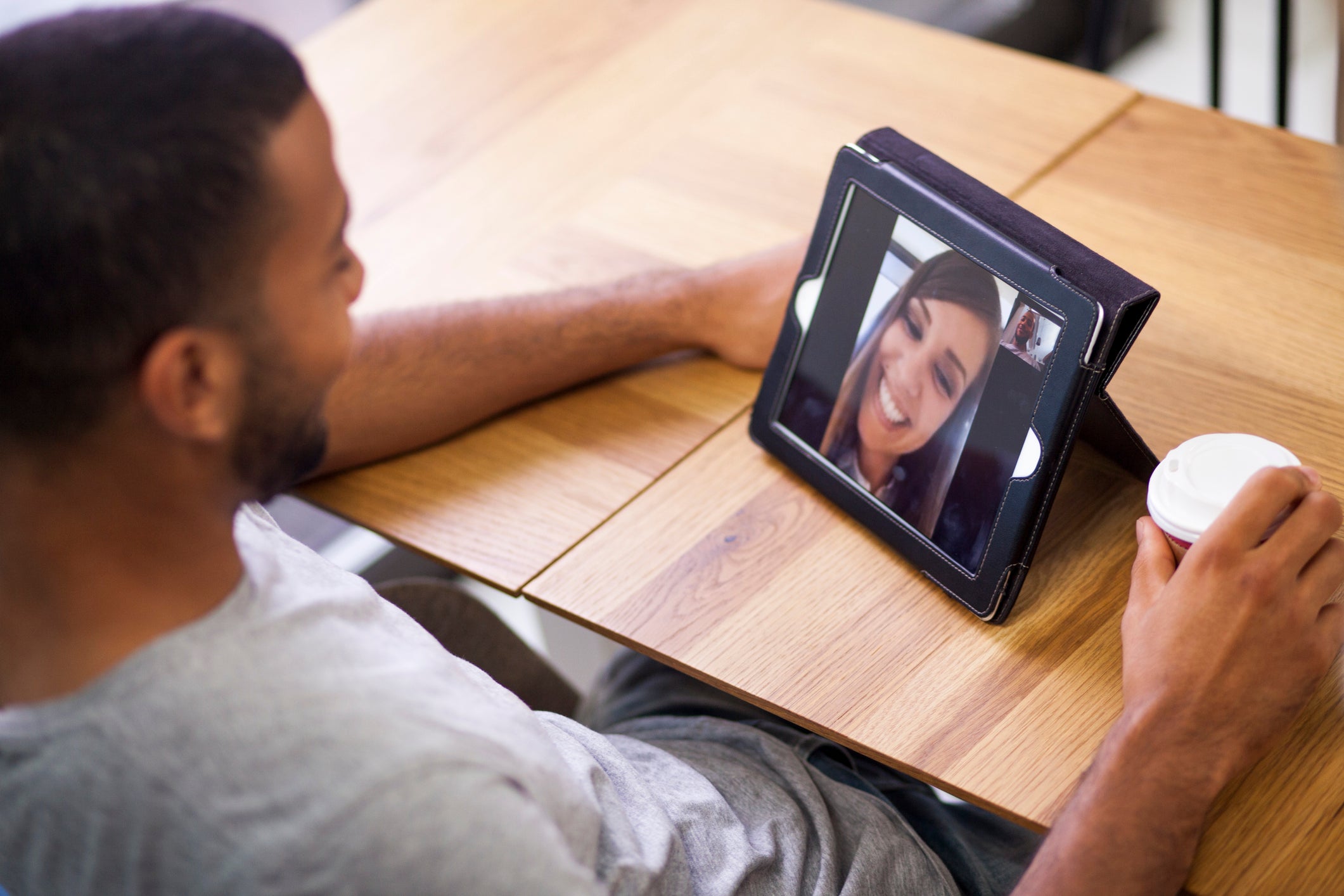How to make a long-distance relationship work in a pandemic
Long-distance relationships were often hard even before the pandemic, but just like much else now they've only got harder. Holly Burns gives her tips on making it work

Your support helps us to tell the story
From reproductive rights to climate change to Big Tech, The Independent is on the ground when the story is developing. Whether it's investigating the financials of Elon Musk's pro-Trump PAC or producing our latest documentary, 'The A Word', which shines a light on the American women fighting for reproductive rights, we know how important it is to parse out the facts from the messaging.
At such a critical moment in US history, we need reporters on the ground. Your donation allows us to keep sending journalists to speak to both sides of the story.
The Independent is trusted by Americans across the entire political spectrum. And unlike many other quality news outlets, we choose not to lock Americans out of our reporting and analysis with paywalls. We believe quality journalism should be available to everyone, paid for by those who can afford it.
Your support makes all the difference.By now, you know the drill: If something was hard before the pandemic, it’s even harder during it. That goes for work-life balance, for parenting, and especially for finding the will to change out of your favourite sweatpants.
But when it comes to dating long distance, it’s not quite as clear-cut. If you were in a long-distance relationship before the pandemic began, you’re likely fairly practised in sustaining it from afar, says Theresa DiDonato, an associate professor of psychology at Loyola University Maryland and an expert in romantic relationships. It’s the newer couplings – those created shortly before or since the start of the pandemic – that may be on more fragile ground.
That’s not to say that people aren’t giving it a go. The dating website OkCupid has seen an 83 per cent increase in new users setting their location preferences to “anywhere” since the pandemic began, says a spokesperson for the company. Survey results published in October from Match.com, another dating site, show 51 per cent of respondents said they were more open to a long-distance relationship than in previous years.
“In normal times, I think the challenges of dating long distance might have prevented us from deciding to try it,” says Joey White, a resident physician in Ann Arbor, Michigan, who met his Washington, D.C.-based boyfriend in May. “But basically every other aspect of life is virtual right now anyway. It doesn’t seem like a big deal to only communicate over FaceTime.”
A new long-distance relationship is the ultimate in social distancing. Can it survive a pandemic? Here’s how to give it your best shot.
Talk about when you’re going to talk
When you’re dating long distance, it’s imperative to “set clear expectations around when and how you’ll communicate”, says Logan Ury, director of relationship science at the dating app Hinge and author of the book, How to Not Die Alone. “Some people like texting back and forth all day, but others find it distracting. Establish early on how often you’ll be in touch and for what duration.”
When you’re setting up a recurrent video chat, choose times you can commit to, so your partner feels they’re a priority, says Bela Gandhi, a dating coach and the founder of the coaching service Smart Dating Academy. A little self-awareness can also go a long way.
“If you know you’re not a nighttime person, don’t schedule FaceTimes for 10 pm,” she says. “You don’t want to be tired and grumpy when you talk.”
Even in geographically close relationships, people’s attachment anxieties can be triggered by stressful situations, says DiDonato – like, say, a deadly pandemic.
“They often need more reassurance that the relationship is working and that the other person wants to be with them,” she says.
But when you are dating long distance, it’s harder to console your partner on demand. And for someone who is already feeling insecure, an unanswered text can seem like a tragedy when it’s really just a time-zone thing.
To keep it on an even keel, work periodic check-ins into the communication plan, says DiDonato. “You can say, ‘Hey, I notice you don’t reply when I text in the morning. Is that not working for you?’”

Be there even when you can’t be there
Anna Hosey, a hairdresser in Chicago, lives almost 4,000 miles from her fiance in London. But they still dress up for meals together, lit by candles and the glow of their laptops, even if one of them is eating dinner and the other is having a midnight snack.
It’s important to create quality time virtually, says Ury, and that doesn’t just mean segueing from work-Zoom to date-Zoom at your desk.
“Go for a walk together,” she says. “Pick a time you can both get outside, then call each other and describe what you see.”
Scheduling virtual dates can be a critical way of cultivating what DiDonato calls interdependence – that is, weaving your lives together.
“In high-interdependence relationships, your partner is always at the back of your mind,” she says. “You see brussels sprouts at the grocery store and you think, ‘Oh, she likes those, I’ll get some.’”
This idealised notion of the relationship can come crashing down when you eventually move into close proximity
Creating mutual experiences from afar can give you a way to intertwine your lives – cruciferous vegetables optional. Hosey and her fiance watched all 62 episodes of Breaking Bad together on separate continents – “We literally said, ‘3, 2, 1’ and pressed play at the same time,” she says. Gandhi advises couples to choose a new recipe together, then video chat while they’re making it.
Equally important in long-distance relationships, says Ury, is responding to your partner’s bid for emotional connection, an idea coined by psychological researcher John Gottman.
“If they send you an article, do you read it and move on or do you write back with a reply?” she says.
And don’t forget to make bids, too.
“Reach out and ask how that hard meeting went,” she says. “It’s not about grand gestures; it’s about doing small things often.”
But be realistic about actually being there
“There needs to be momentum to build a relationship, and part of that momentum comes from meeting up in person,” Ury says.
Unfortunately, with the Centres for Disease Control and Prevention advising against unnecessary travel, jetting off to see your paramour for a long weekend may be difficult. And without the cadence of regular visits to sustain you, says Ury, it may be more difficult for the relationship to, well, take flight.
It can also make it harder to “practise” being together in real life, DiDonato says. For couples who are apart for long periods of time, “the challenge can often happen with reunification,” she says. Not seeing each other doesn’t just mean you miss out on magical moments; it also means you miss out on the warm-up of daily life together, too. Without that, “this idealised notion of the relationship can come crashing down when you eventually move into close proximity,” she says.

Even if you are separated by a drive and not a flight, you should still preface your liaisons with a pre-visit chat, DiDonato says. “Do you wear masks around each other? When do you discuss your plans with roommates or others whose health could be affected? What if one of you wants to eat at a restaurant and the other isn’t comfortable? There’s a lot of new turf to negotiate.”
Get awkward early
Commit not just to the relationship – are you seeing each other exclusively? – but also to a mutual plan for its path, Gandhi says.
“Make sure you’re on the same page about where you’re going,” she advises. “Long distance is fine for a while, but you need an end goal.”
That means having big conversations and having them upfront.
“Don’t whittle away two years of your lives without ever asking, ‘Would you move here or would I move there? Do you want to get married? Do you want kids?’” Gandhi says.
The upside is that there’s plenty of time to talk.
“Often in long-distance relationships, people say, ‘I just want to enjoy this perfect weekend together, I don’t want a heavy conversation,’ so you end up pushing it down the road longer than you should,” DiDonato says.
With travel paused, you can get to the nitty-gritty sooner.
If the relationship feels worth conserving, says DiDonato, it helps to take the long view. There is evidence to suggest that long-distance relationships “can have just as much intimacy, high-quality communication and satisfaction as geographically close relationships,” she says.
Above all, remember that this too shall pass.
“It’s just a temporary sacrifice of physical nearness,” DiDonato says. “Eventually, it’ll end.”
© The New York Times




Join our commenting forum
Join thought-provoking conversations, follow other Independent readers and see their replies
Comments